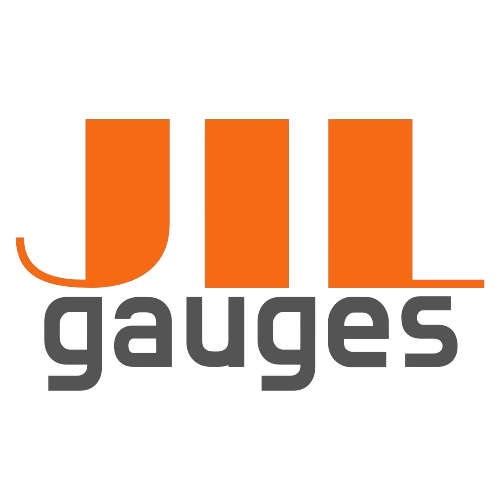- Details
- Category: How to choose
Our next topic will be divided into two sub-topics, and they will touch a few important pressure gauge-related subjects that might help you decide which types of gauges are the perfect fit for your needs. The sub-topics are:
Gauge parameters (specifications)
Gauge types and application area
This article focuses on gauge parameters. Gauge types will be made available at a later time.
You might be familiar with the various parameters of a gauge, but if it is not the case, or you simply want a reminder on a few specific areas, this article is just for you. The areas that we will talk about are pressure ranges, accuracy, housing sizes, connection types, wetted parts, and liquid filling.
Pressure range
On our pressure gauges’ dial face, the unit of pressure is displayed in “bar”, “kPA”, and/or “psi” (pounds per square inch). Usually the best approach to select a gauge is to first learn the normal working pressure of your own system (for example 100 psi), then choose a gauge with a range around twice your system’s normal working pressure (in this case around 200 psi).
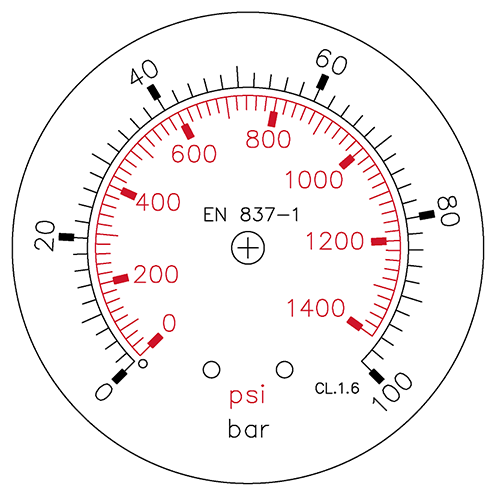 There are a few reasons why this, in most cases, is the best approach. First, pressure gauges are the most accurate in the middle-third section of their measuring range, and second, if the pointer is in the middle (pointing straight up), it is easier and faster to make sure everything is working as it should be, that is, the system is operating on its normal working pressure.
There are a few reasons why this, in most cases, is the best approach. First, pressure gauges are the most accurate in the middle-third section of their measuring range, and second, if the pointer is in the middle (pointing straight up), it is easier and faster to make sure everything is working as it should be, that is, the system is operating on its normal working pressure.
However, there are some other important factors you should be aware of. Selected pressure range should not be too low, as under extremely high pressure, the gauge might be damaged. A good practice is to choose one based on the type of pressure the gauge is subjected to. If the working pressure is on the same level most of the time, select a gauge that will most likely not exceed 3/4 of its dial range. But in case of alternating pressure or pulsation, it is better to select one that does not exceed 2/3 of its dial range.
Accuracy
When choosing a pressure gauge, determining accuracy need is key, as none of the other parameters influence more the price of a gauge than its accuracy. Thus based on your application, select a gauge that is accurate enough, but not overly accurate, because this can save you from a lot of unnecessary expenses. Gauge accuracy grades are specified by ASME B40.100 as follows: D, C, B, A, 1A, 2A, 3A, and 4A, where 4A is the most accurate and D is the least accurate.
| ASME Accuracy grade | First quarter of scale (%) | Middle half of scale (%) | Last quarter of scale (%) |
| 4A | 0.1 | 0.1 | 0.1 |
| 3A | 0.25 | 0.25 | 0.25 |
| 2A | 0.5 | 0.5 | 0.5 |
| 1A | 1 | 1 | 1 |
| A | 2 | 2 | 2 |
| B | 3 | 2 | 3 |
| C | 4 | 3 | 4 |
| D | 5 | 5 | 5 |
For example, when you hear “3-2-3”, it refers to a 3-2-3% accuracy “B grade” gauge. It means that in the middle half of the scale, the gauge has an accuracy of ±2%, but in the first and last quarter the pointer is ±3% off.
ASME grades 1A, 2A, 3A, and 4A have full scale accuracy, which means that the gauge shows the same accuracy in all four quarters. Therefore, if a pressure gauge is for your personal spray gun, probably you do not need the most accurate gauge available on the market, a “B grade” will do just fine. That said, an “A grade” is still affordable and still delivers a “2-1-2” accuracy.
Gauges with 1%, 0.5%, 0.25%, and 0.1% accuracy are for professional use, where noting 0.5 PSI pressure difference is imperative.
Gauge housing size
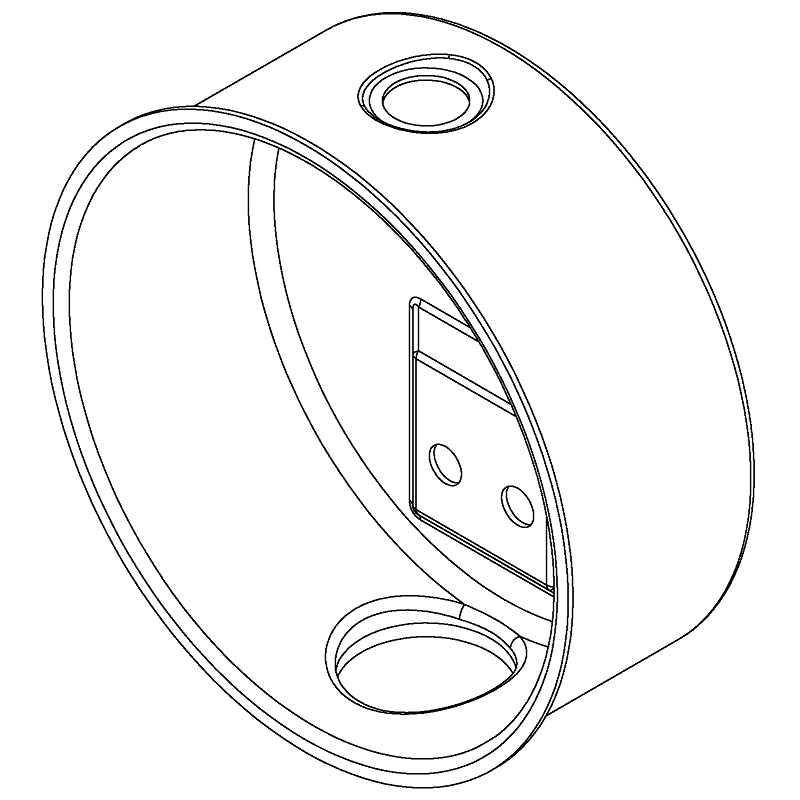 For our visitor’s convenience, on JIL Gauges’ website, every gauge size is indicated in inches and millimeters too. Sizes may vary from 30mm (1.5”) and up. If you are not sure about your requirements, the quickest way to select a size is to measure your old gauge’s size (not the front ring, but the back housing part), measure the place where you want to place the gauge, or to get in touch with us here. We can provide you with some additional tips.
For our visitor’s convenience, on JIL Gauges’ website, every gauge size is indicated in inches and millimeters too. Sizes may vary from 30mm (1.5”) and up. If you are not sure about your requirements, the quickest way to select a size is to measure your old gauge’s size (not the front ring, but the back housing part), measure the place where you want to place the gauge, or to get in touch with us here. We can provide you with some additional tips.
Mounting types
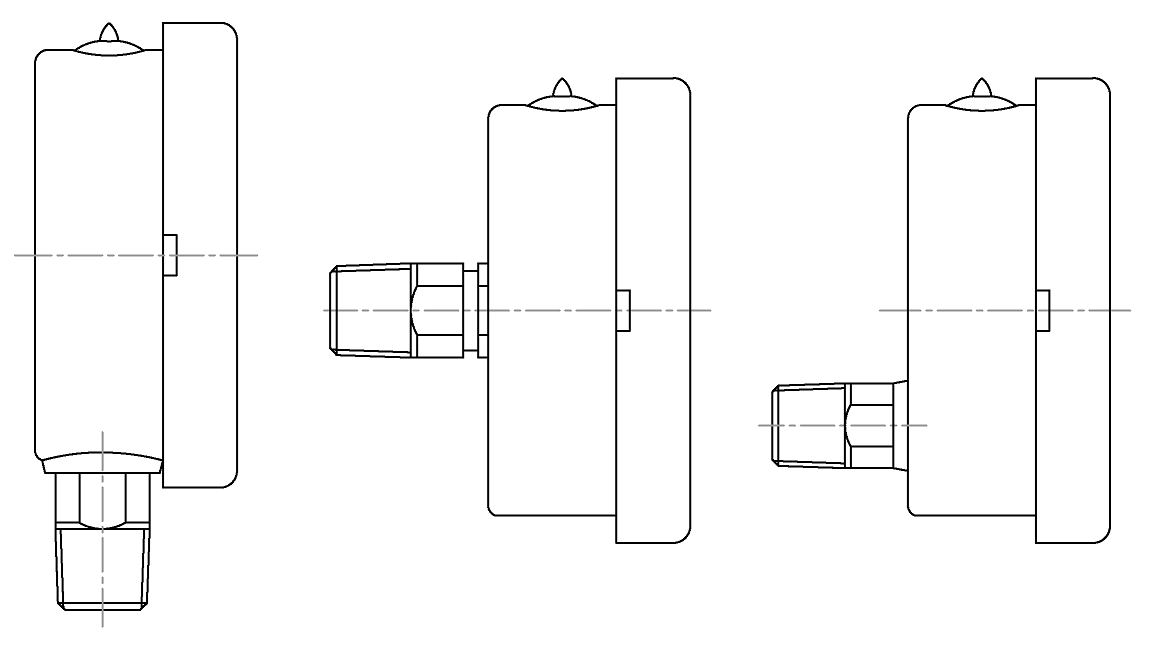 JIL Gauges usually provides three types of mounting options: BM (bottom), CBM (center back), and LBM (lower back). As their names imply, when we talk about BM - the connection is on the bottom of the gauge, CBM - the connection is in the middle of the back, and LBM - the connection is located on the back, but at a lower position. Nevertheless, whatever the mounting type is, because of their unique built, gauges should be mounted in an upright position.
JIL Gauges usually provides three types of mounting options: BM (bottom), CBM (center back), and LBM (lower back). As their names imply, when we talk about BM - the connection is on the bottom of the gauge, CBM - the connection is in the middle of the back, and LBM - the connection is located on the back, but at a lower position. Nevertheless, whatever the mounting type is, because of their unique built, gauges should be mounted in an upright position.
Thread types and sizes
Depending on the geographical location, environment and other factors, the industry uses different types of threads. The most common thread types are NPT (National Pipe Taper), NPS (National Pipe Straight), BSPT (British Standard Pipe Taper), and BSPP (British Standard Pipe Parallel).
NPT and NPS are the most common in the USA and Canada and have a 60° included angle and Sellers thread form (flattened peaks and valleys). The main difference between the two is that the thread shape of NPT is tapered, and the thread shape of NPS is straight (parallel).
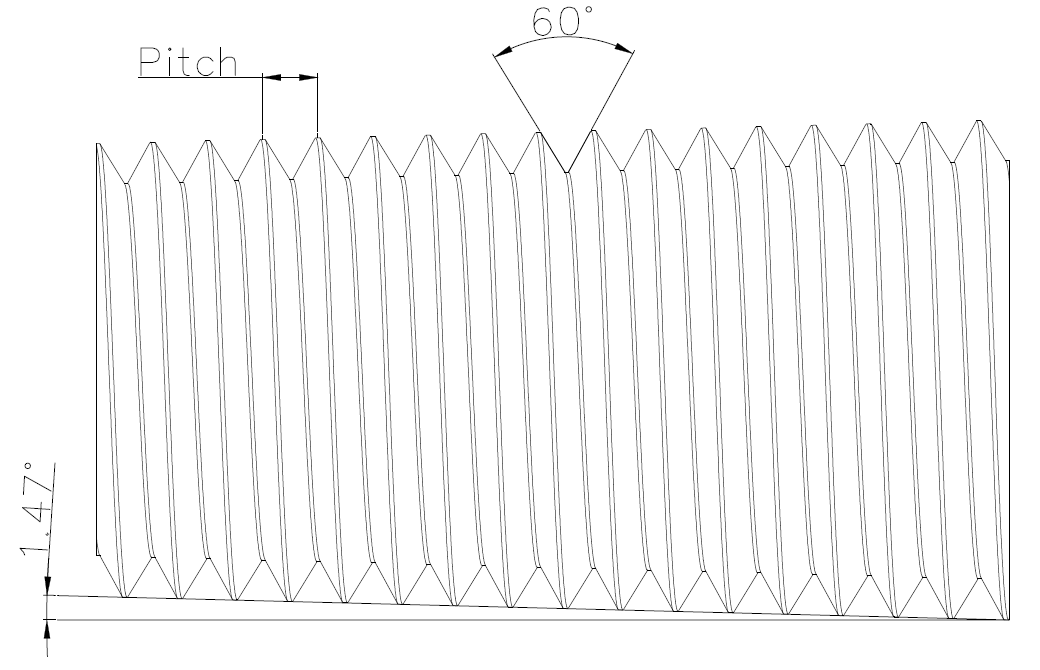
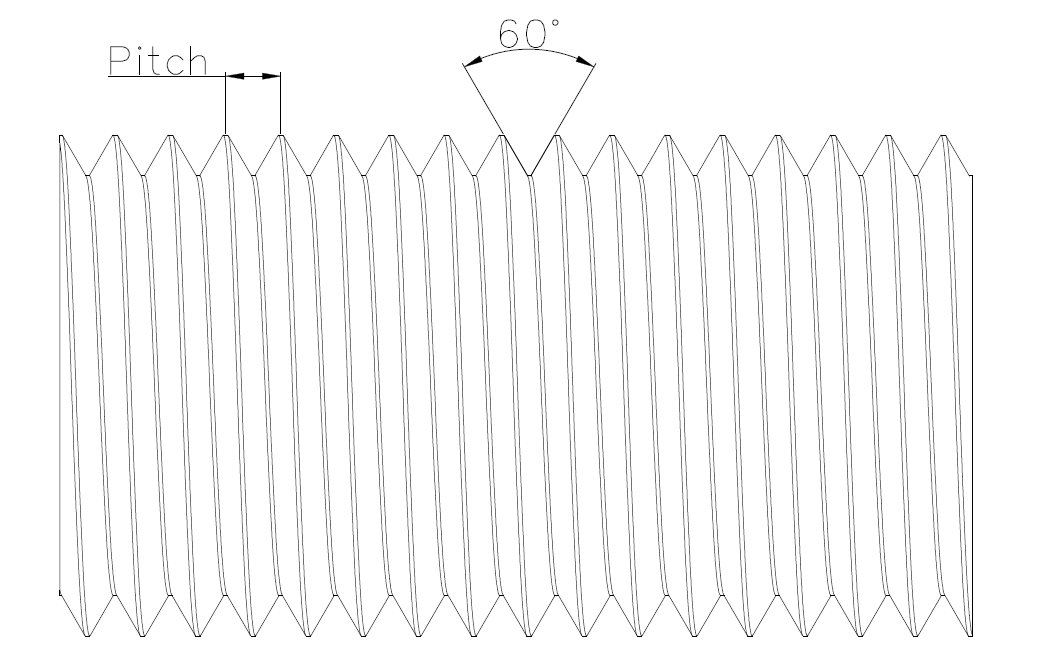
BSPT and BSPP, on the other hand, is wildly used anywhere else, all around the World, and have a 55° included angle, and Whitworth thread form (rounded peaks and valleys). And again, the main difference between the two is that the thread shape of BSPT is tapered, and the thread shape of BSPP is straight (parallel).
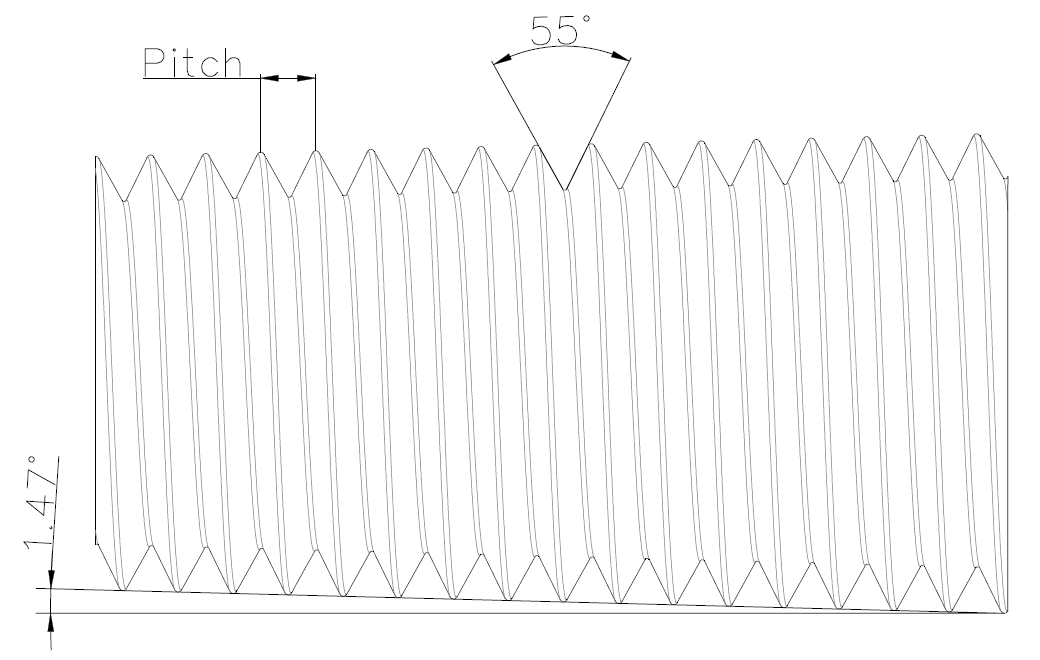
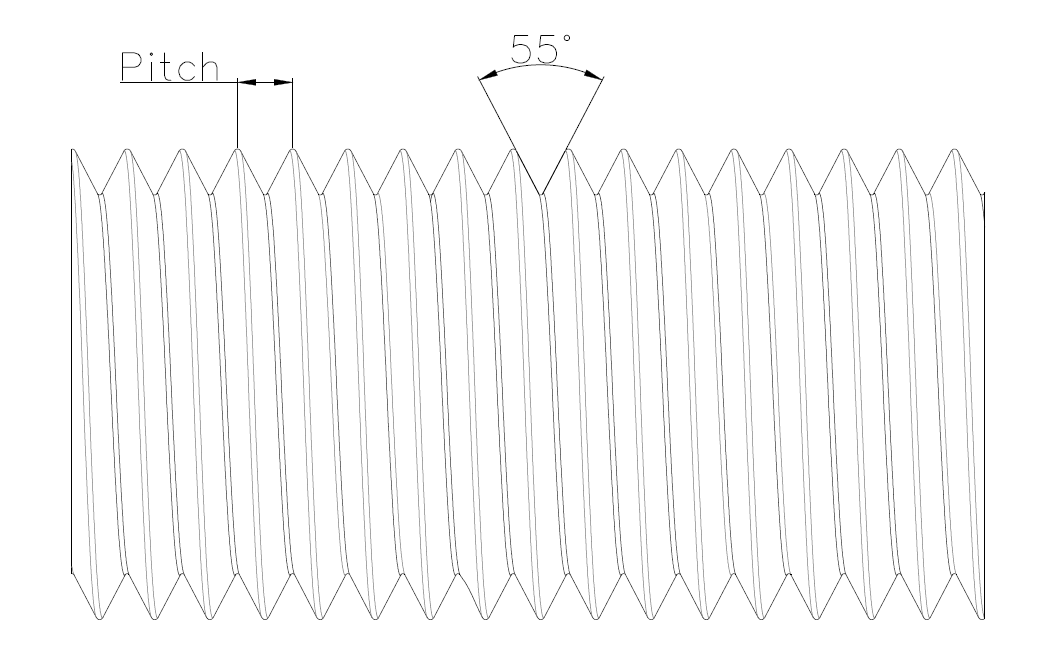
Thus NPT and BSP threads are not compatible with each other, and mating the two fittings is highly advised against! Always use the proper thread or an approved NPT-BSP adapter.
The most common thread sizes are 1/8”, 1/4”, 3/8”, and 1/2”. These numbers are trade sizes, and do not necessarily indicate actual diameters.
Wetted parts
Wetted parts are the parts that come in contact with the measured media (liquid, gas, and so on). These parts are most commonly made of brass, or stainless steel. Brass has the advantage of better price, and it is good for measuring non-corrosive media (air, water, gasoline, and so on), but on the other hand stainless steel is tougher, so it can withstand acid and other corrosive media better.
Liquid filling
Gauges can be liquid filled, liquid fillable, or dry. As their names suggest, liquid fillable gauges can be, but dry gauges cannot be filled with liquid by the end user. Liquid filled gauges are always filled with liquid by the manufacturer.
Filling a gauge with liquid (either silicone or glycerin) protects and lubricates the inner mechanisms, pointer, and dial face from frequent mechanical vibration, resonance, pulsation, or high temperature. Also steadies the pointer, thus making the dial face easier to read.
- Details
- Category: How to choose
In this chapter we talk about pressure gauge ring and lens types, available at JIL Gauges. Which one you should choose? What are the advantages and disadvantages of one over another? Well, let’s get to it.
Crimp ring
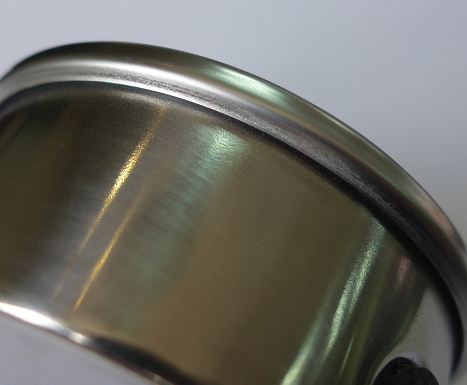 It is a non-removable solution, thus the gauge cannot be manipulated with. A crimping machine crimps the ring (folds the ring’s edge) onto the housing, holding the lens and lens ring gasket in their place. Examples: 200L, 300L, etc.
It is a non-removable solution, thus the gauge cannot be manipulated with. A crimping machine crimps the ring (folds the ring’s edge) onto the housing, holding the lens and lens ring gasket in their place. Examples: 200L, 300L, etc.
Bayonet ring
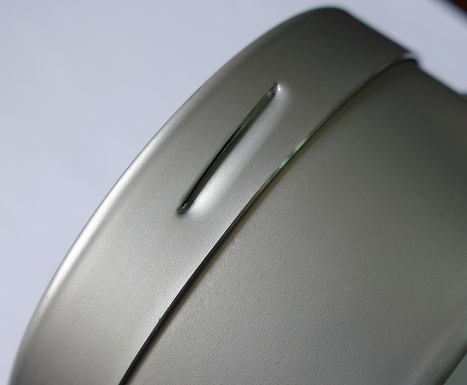 It is a removable solution, thus the ring and lens can be taken off to access the calibration screw on the dial face, or other inner parts of the gauge. On the rim of the bayonet ring there are – most commonly – three to five bayonets that clasp the ring and housing together. The ring’s rim lies flat on the housing. Examples: 210L, 310L, etc.
It is a removable solution, thus the ring and lens can be taken off to access the calibration screw on the dial face, or other inner parts of the gauge. On the rim of the bayonet ring there are – most commonly – three to five bayonets that clasp the ring and housing together. The ring’s rim lies flat on the housing. Examples: 210L, 310L, etc.
Friction ring
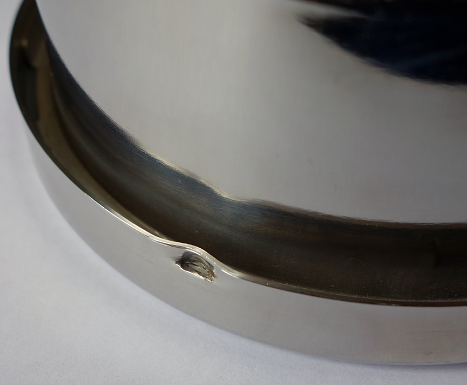 It is a removable solution, but in this case the rim does not lie flat on the housing, it is elevated. The rim has small tabs (visible from the side) that hook onto the specially shaped housing. Examples: 220L, 320L, etc.
It is a removable solution, but in this case the rim does not lie flat on the housing, it is elevated. The rim has small tabs (visible from the side) that hook onto the specially shaped housing. Examples: 220L, 320L, etc.
ABS cover ring
As its name implies, this ring – placed on the housing – covers not only the front, but the sides as well. Despite of its look, actually it is made of gold colour coated plastic (ABS). Example: 601L
Stainless steel cover ring
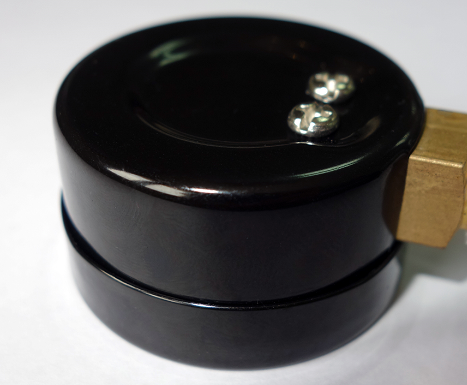 It is a small, non-removable, black finished stainless steel ring that has been pressed/fixed onto the housing, covering its front and a part of the sides. Example: 111D
It is a small, non-removable, black finished stainless steel ring that has been pressed/fixed onto the housing, covering its front and a part of the sides. Example: 111D
Snap-in / twist-on polycarbonate (PC) lenses
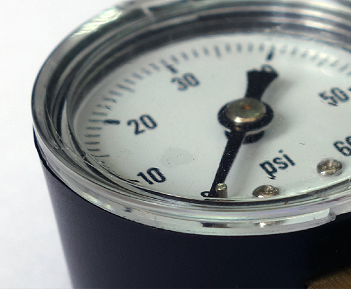 As the name would suggest, snap-in lens snaps directly into the housing with a click, and twist-on lens – with its threads – can be screwed onto the housing. Examples: F7S/F7T, C1T, etc.
As the name would suggest, snap-in lens snaps directly into the housing with a click, and twist-on lens – with its threads – can be screwed onto the housing. Examples: F7S/F7T, C1T, etc.
Polycarbonate (PC), and safety glass lenses
These materials have their own advantages and disadvantages when compared. If your priorities are a clear glass look, longevity, strength, and durability, you may prefer the safety glass lens, but it is a bit more expensive, fragile, heavy, and less forgiving to knocks than lens made of polycarbonate. That said, polycarbonate lenses are lightweight, very durable, but scratch a bit more easily.
- Details
- Category: How to choose
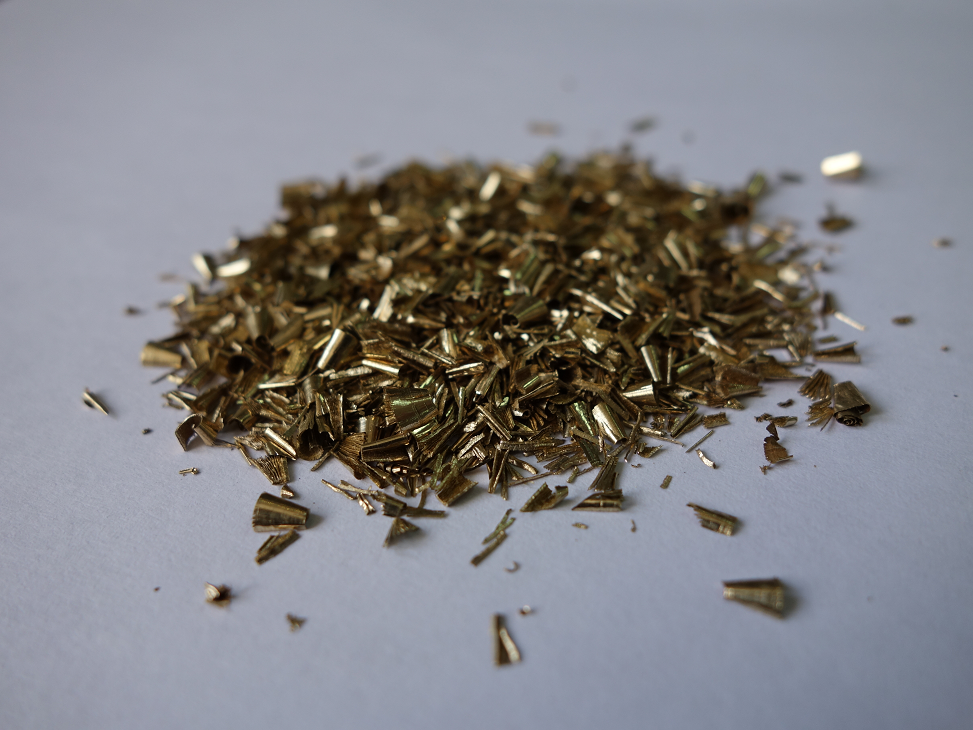 When it comes down to material choice, we get a lot of questions about what kind of materials JIL Gauges uses when a pressure gauge is made. We could conclude this with just saying “high quality” materials (as most manufacturers would do), but let’s not be vague here and explain a few things in more detail.
When it comes down to material choice, we get a lot of questions about what kind of materials JIL Gauges uses when a pressure gauge is made. We could conclude this with just saying “high quality” materials (as most manufacturers would do), but let’s not be vague here and explain a few things in more detail.
For now, we only concentrate on our most frequently used copper alloys - phosphor bronze, and brass -, but in later chapters we will take a look at other materials, as well.
OK, let’s start from the beginning.
If you are in the industry, you definitely have heard terrifying stories about cheaply made copper alloy gauges that have cracked, broken in half, or worse, hurt someone. These, of course, could have been avoided if uncontaminated and tested copper alloy were used.
So what phosphor bronze, and brass are exactly?
Let Wikipedia explain it for us:
“Phosphor bronze is an alloy of copper with 3.5 to 10% of tin and a significant phosphorus content of up to 1%. The phosphorus is added as deoxidizing agent during melting. These alloys are notable for their toughness, strength, low coefficient of friction, and fine grain. The phosphorus also improves the fluidity of the molten metal and thereby improves the castability, and improves mechanical properties by cleaning up the grain boundaries.”
“Brass is an alloy made of copper and zinc; the proportions of zinc and copper can be varied to create a range of brasses with varying properties. It is a substitutional alloy: atoms of the two constituents may replace each other within the same crystal structure. Brass is used for decoration for its bright gold-like appearance; for applications where low friction is required such as locks, gears, bearings, doorknobs, ammunition casings and valves; for plumbing and electrical applications; and extensively in brass musical instruments such as horns and bells where a combination of high workability (historically with hand tools) and durability is desired. It is also used in zippers. Brass is often used in situations in which it is important that sparks not be struck, such as in fittings and tools around explosive gases.”
It is clearly seen, that these materials are highly versatile and useful for manufacturers, but are these materials highly available, and cheap to produce? The simple answer would be “yes”, but the situation is not that simple.
We could make brass, and phosphor bronze by melting copper-zinc, or copper-tin-phosphorus respectively, but it would be uneconomical in the long run and wasteful of raw materials. That is why manufacturers, all around the world, use almost 100% brass/phosphor bronze scrap to produce their goods. If the scrap is pure (e.g. uncontaminated), a high quality product can be manufactured from it, but that said, proper material recycling becomes fundamentally important, and requires a lot of attention.
We heard about and saw lots of manufacturers using mixed, or contaminated copper alloy scrap (fallen on the ground, swept up, then used again, or alloys that contain other materials, such as solder), and that is unacceptable by any standard.
But here at JIL Gauges we are extra careful when we work with recycled materials. We don’t mix alloy compositions, but first sort and segregate them into grades, remelt the alloy, remove the contaminants, and finally our thorough inspection takes place just before they are prepared for reuse.
So rest assured, if you choose us, you get the quality you are looking for.
© 2025 JIL Gauges
